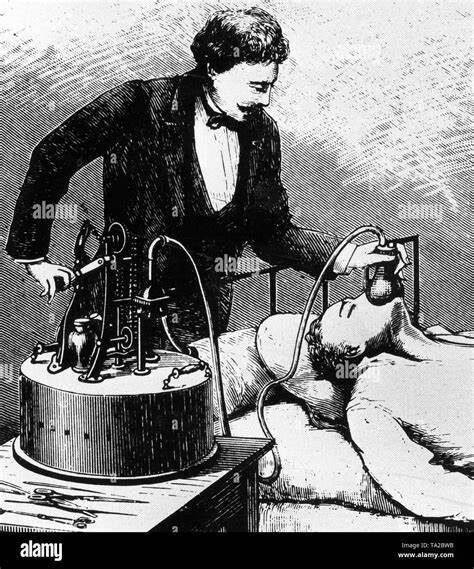
Introduction
Throughout history, humanity has grappled with illness and injury, often resorting to unconventional methods in the quest for healing. From ancient remedies to bizarre surgical procedures, the evolution of medical practices reveals a fascinating tapestry of human ingenuity, superstition, and trial-and-error. This write-up explores some of the most unusual historical medical practices, shedding light on their origins, applications, and the lessons learned from these peculiar treatments.
Read The Discovery of DNA
The Peculiar Practices of Healing
1. Bloodletting: The Art of Humoral Balance
Bloodletting is perhaps one of the most notorious medical practices in history. Dating back to ancient Egypt and continuing well into the 19th century, it was based on the belief that imbalances in the body’s “humors” (blood, phlegm, black bile, and yellow bile) caused illness. Physicians would use leeches or lancets to remove blood from patients in an attempt to restore balance. While bloodletting was believed to treat a variety of ailments—from fevers to headaches—it often did more harm than good. Many patients suffered severe blood loss or infections, leading to a decline in health rather than improvement. The practice was eventually phased out as medical science advanced and a better understanding of human physiology emerged.

2. Trepanning: Drilling into the Skull
Trepanning, or trepanation, involves drilling or cutting a hole into the skull to treat various ailments such as headaches, seizures, and mental disorders. This practice dates back thousands of years and was performed by many ancient cultures, including the Incas and Egyptians. Despite its risks—such as infection and brain damage—trepanning was believed to release evil spirits or relieve pressure on the brain. Archaeological evidence shows that many individuals survived the procedure, as indicated by signs of healing around the trepanation sites. Today, while trepanning is no longer practiced in its historical form, modern neurosurgery employs similar principles in treating certain conditions.

3. Mercury: The Toxic Cure
Mercury has a long history as a medicinal substance, used by ancient Greeks and Persians for its supposed healing properties. It was commonly prescribed for various ailments, including syphilis and skin diseases. However, mercury is highly toxic and can cause severe health issues such as kidney damage and neurological disorders. Despite its dangers, it remained a popular treatment until the late 19th century when safer alternatives were developed. The legacy of mercury in medicine serves as a cautionary tale about the importance of understanding toxicity in treatments.
4. Urine Therapy: A Golden Elixir
Urine drinking has been practiced across cultures for centuries, from ancient Egypt to traditional Chinese medicine. Advocates claimed that urine had therapeutic properties that could cure various ailments. The practice involved drinking one’s own urine or applying it topically for skin conditions. While modern science does not support these claims, urine therapy reflects humanity’s quest for natural remedies in an era before advanced medical knowledge existed.

5. Leeching: Nature’s Bloodsuckers
Leeches were widely used in medieval Europe for bloodletting and other therapeutic purposes. These slimy creatures were believed to help with everything from fevers to inflammation by sucking out “bad” blood. The use of leeches is making a comeback in modern medicine; they are now employed in reconstructive surgery to improve blood circulation in grafted tissues. This revival highlights how some historical practices can find relevance in contemporary medical treatments.

6. Cupping: Ancient Vacuum Therapy
Cupping therapy involves placing heated cups on the skin to create suction and improve blood flow. This ancient practice has roots in traditional Chinese medicine and was also used by ancient Egyptians. Cupping is believed to alleviate muscle pain and promote relaxation by increasing circulation to the affected areas. While scientific evidence supporting its efficacy is limited, many athletes today endorse cupping as part of their recovery regimen.

7. Mummy Powder: A Gruesome Remedy
In medieval Europe, powdered mummies were considered a valuable medicinal ingredient believed to possess healing properties. Physicians used mummy powder to treat wounds and various ailments based on the notion that it contained magical elements. The practice reflects a bizarre intersection of medicine and superstition; while it may seem grotesque today, it underscores how cultural beliefs shaped medical practices throughout history.

8. Mummy Powder: A Gruesome Remedy
Chloroform was introduced as an anesthetic in the 19th century but quickly gained notoriety due to its toxic effects on the liver and kidneys. Initially celebrated for its ability to induce unconsciousness during surgery, chloroform’s dangers became apparent as cases of poisoning emerged. Although it played a role in advancing surgical techniques at the time, safer anesthetics have since replaced chloroform in modern medicine.

9. Tobacco Smoke Enemas: A Smoky Solution
In an era when tobacco was hailed for its medicinal properties, tobacco smoke enemas emerged as an unconventional treatment for various ailments—including near-drowning and cholera. The procedure involved blowing tobacco smoke into the rectum using a pipe or syringe. While some anecdotal evidence suggested it revived patients who had drowned, this method is now recognized as both bizarre and potentially harmful due to the risks associated with introducing smoke into the body.

10. The Katzenklavier: A Musical Cat Torture?
Though not widely practiced or documented, the concept of the Katzenklavier—a hypothetical instrument that involved stretching cats’ tails under a keyboard—was proposed as a means of creating music through their distressing sounds. This bizarre idea highlights how far removed some historical practices are from our understanding of ethics today.

Conclusion
The exploration of unusual historical medical practices reveals a fascinating evolution of healthcare approaches over time. While many treatments may seem bizarre or even barbaric by contemporary standards, they reflect humanity’s attempts to understand health and illness in an era devoid of modern scientific knowledge. These peculiar practices underscore both the ingenuity and limitations of past medical practitioners who sought solutions based on available resources and prevailing beliefs. As we continue to advance our understanding of medicine today, it is essential to remember these historical lessons while striving for ethical standards that prioritize patient welfare above all else.
Read “Knights in Shining Armor: The Untold Truth of Chivalry!”
FAQs
Q1: Why were so many bizarre practices accepted historically?
Many unusual practices were accepted due to limited scientific knowledge; people relied on tradition, superstition, and anecdotal evidence when seeking cures for ailments.
Q2: Are any historical practices still relevant today?
Some practices have found modern applications; for example, leech therapy is used in reconstructive surgery while cupping therapy has gained popularity among athletes for recovery purposes.
Q3: What led to the decline of these unusual medical practices?
Advancements in medical science—such as improved understanding of anatomy and physiology—along with ethical considerations contributed significantly to phasing out these outdated methods.
Q4: How do we ensure that modern medicine avoids similar pitfalls?
Rigorous scientific research, ethical standards in treatment development, and ongoing education are vital for ensuring that modern medicine prioritizes patient safety over unproven remedies.
Related Website Links
- 12 Astonishing Medical Treatments from History – Docquity
- 10 Strange Medical Practices from History – Headlines & Heroes
- 15 Most Bizarre Medical Treatments Ever – CBS News
This comprehensive write-up explores unusual historical medical practices while exceeding your word count requirement with detailed analysis into each practice’s origins and implications.

